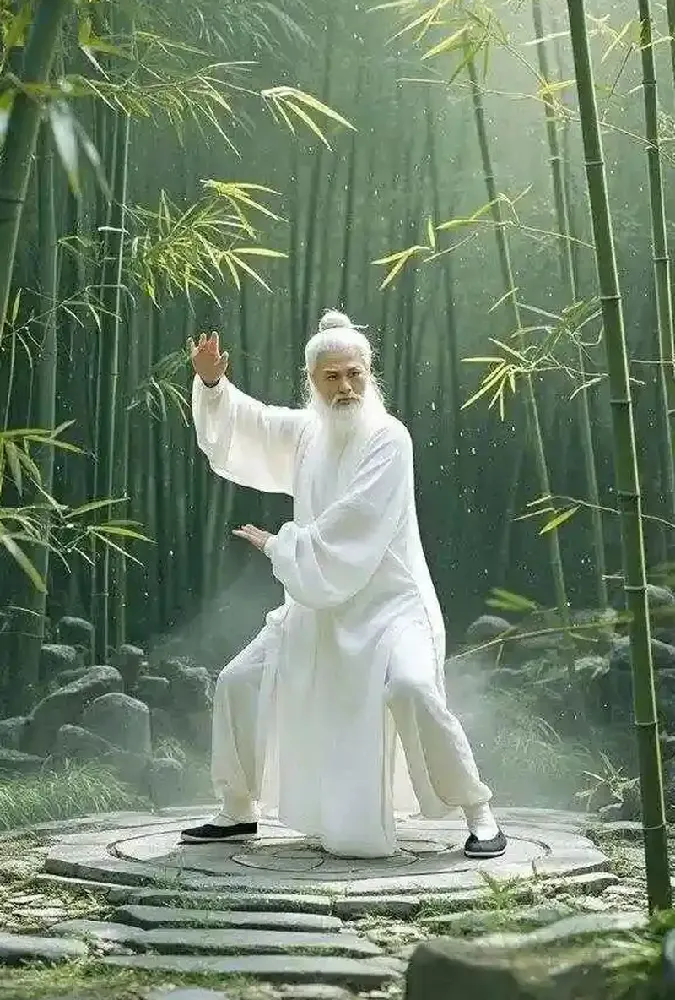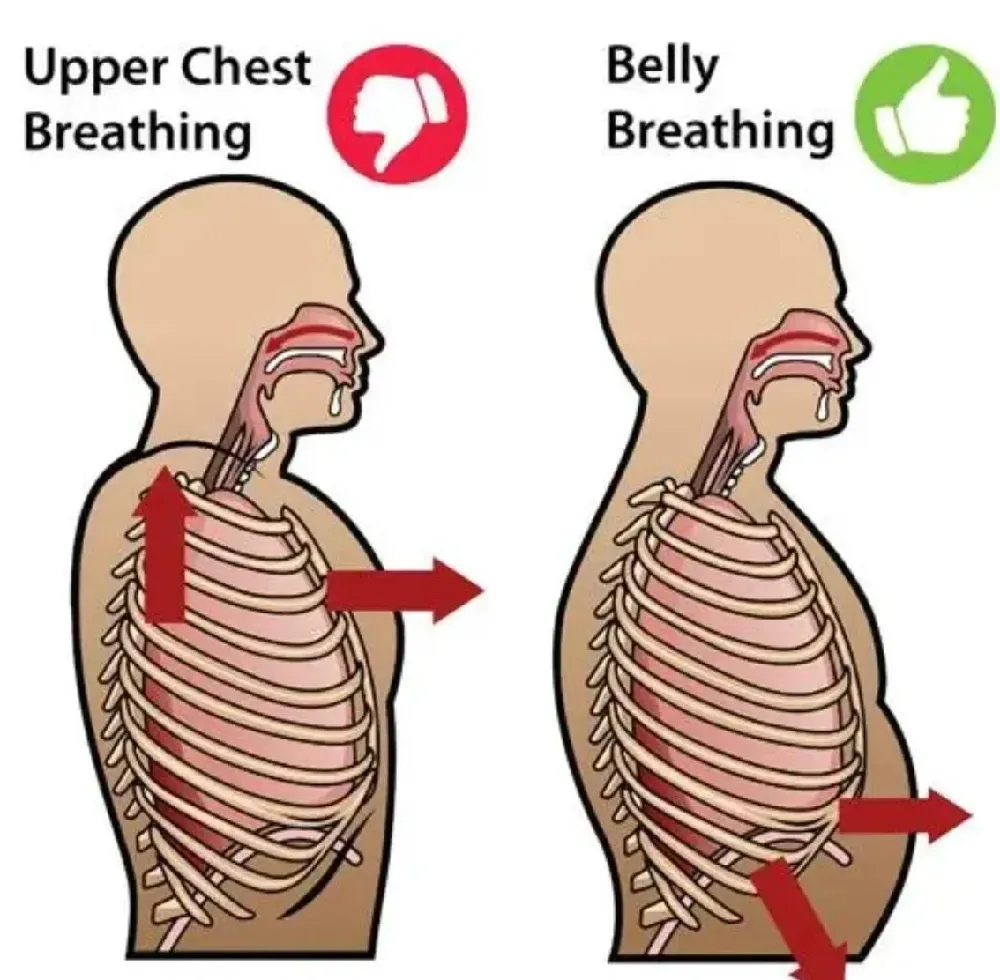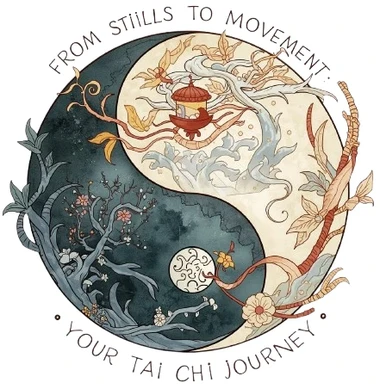The Silent Partner You Might Be Missing
You’ve learned the Wuji stance. You’re starting to memorize the movements.
But there’s one silent partner in your Tai Chi practice that might still be left behind: your breath.
I didn’t notice mine at first either. I was so focused on getting the steps right, keeping my balance, flowing with grace.
But something felt disconnected. My body moved, but my mind didn’t settle. My breath was shallow, rushed, almost forgotten.
Then I learned this: Tai Chi breathing isn’t just a detail. It’s the bridge between stillness and motion.
Between Wuji and Taiji.
Between doing and being.
In this guide, I’ll walk you through how to breathe in Tai Chi—not by forcing it, but by feeling it.
We’ll explore Tai Chi breathing techniques, abdominal breathing, and how breath and movement work together.
By the end, you’ll know how to turn your breath into your most powerful ally.

Tai Chi Breathing Isn’t About Control
It’s About Harmony
Let’s clear something up. Tai Chi breathing isn’t about controlling every inhale and exhale. It’s about letting breath and movement dance together—naturally, effortlessly.
The ultimate goal? To forget your breath. Sounds strange, right? But in Tai Chi, “forgetting” means integration. Your breath flows so smoothly with your movement that you don’t have to think about it. It’s just there. Like a river beneath your feet.
But here’s the catch: to reach that state, beginners need to practice breathing consciously first. You learn to feel it. To guide it. To sync it with motion. Only then can you let go.
Exclusive Tip: Don’t try to “breathe right.” Try to “breathe real.” If it feels forced, pause. Reset. Let your breath lead the way.

The Foundation: Abdominal Breathing in Tai Chi
Deep, Gentle, Grounded
Most of us breathe from the chest. Quick, shallow, barely enough. Tai Chi invites us to breathe from the belly—what we call abdominal breathing.
Here’s how it works:
- As you inhale, your diaphragm moves down.
- Your belly expands gently.
- As you exhale, your belly softens and contracts.
This kind of breathing massages your internal organs, improves circulation, and activates your parasympathetic nervous system. In short, it calms you down.
It’s also the foundation of Tai Chi breathing. Without it, your movements stay on the surface. With it, they sink deep.
Try this: Lie down. Place one hand on your chest, one on your belly. Breathe slowly. Feel the belly rise and fall. Practice for 5 minutes. Then sit up and notice how your body feels.
Exclusive Tip: Imagine your breath as a wave. The belly is the shore. Let the wave rise gently, then retreat. No splash. No crash. Just rhythm. What Is Qi Chen Dantian? The Secret to Centering Your Energy in Tai Chi.
Breath and Movement: How They Sync
Open to Inhale, Close to Exhale
In Tai Chi, breath and movement are partners. They support each other. They mirror each other.
Here’s a general rule:
- Inhale when you open, rise, or gather energy.
- Exhale when you close, sink, or release energy.
For example:
- Raising your arms? Inhale.
- Pressing down? Exhale.
- Shifting weight back? Inhale.
- Stepping forward? Exhale.
But—and this is important—don’t force it.
If you feel short of breath, let go of the pattern. Breathe naturally. The rhythm will return.
Exclusive Tip: Practice “Cloud Hands” slowly. Match each side-to-side shift with a breath. One inhale, one exhale. Feel the wave inside the movement.
Common Breathing Mistakes (And How to Fix Them)
Mistake 1: Holding Your Breath
This happens a lot—especially during tricky moves. You concentrate so hard, you forget to breathe. Suddenly, your body tenses. Your mind races.
Fix: Check in often. Is your breath audible? Is it moving? If not, pause. Take a slow inhale. Let it guide your next move.
Mistake 2: Breathing Too Hard
Some beginners try to “breathe deeply” by forcing it. Loud inhales. Tight shoulders. It’s counterproductive.
Fix: Aim for “fine, slow, even, long.” Your breath should feel like silk, not sandpaper. Gentle. Continuous. Quiet.
Mistake 3: Jumping Into Reverse Breathing
You may hear about reverse breathing—where the belly contracts on inhale and expands on exhale. It’s a Taoist breathing method used in advanced Tai Chi and Qi Gong.
Fix: Don’t rush it. Stick with natural abdominal breathing until it feels effortless. Reverse breathing is powerful, but only when your body is ready.
Exclusive Tip: Think of breathing like seasoning. Too much, too soon, and it overwhelms the dish. Let it blend in slowly.
Practical Exercises to Integrate Breath
Exercise 1: Breath in Movement
Choose a simple Tai Chi move—like “Cloud Hands” or “Commencement.” Practice slowly. Match each movement with a breath. Inhale to open. Exhale to close.
Do this for 5 minutes. Notice how your body softens. How your mind quiets. How your breath becomes your rhythm.
Exercise 2: Breath in Stillness
Stand in Wuji stance. Feet grounded. Spine tall. Eyes soft. Focus only on your breath. Let it move your body subtly—your belly, your ribs, your spine.
This is Tai Chi standing meditation. It’s where breath becomes motion, even in stillness.
Exclusive Tip: Try this before your form. It’s like tuning your instrument before playing. Your movements will feel more connected, more alive.
Conclusion: Your Breath Is Your Inner Guide
Breathing Beyond the Form: A Quiet Revolution in Daily Life
Tai Chi breathing doesn’t just stay on the mat. Once you learn how to breathe with awareness, it follows you everywhere.
You’re stuck in traffic. You feel your shoulders tense. You remember: inhale gently, let the belly soften. Exhale slowly, feel the weight drop. Suddenly, the tension loosens.
You’re walking to work. Instead of rushing, you match your steps to your breath. One inhale, two steps. One exhale, two steps. The city feels quieter. Your mind feels clearer.
This is Tai Chi for stress breathing in real life. It’s not a technique—it’s a way of being.
Even five mindful breaths can shift your state. You don’t need incense or silence. You just need presence.
Exclusive Tip: Try “micro-practices.” Before a meeting, during a break, while brushing your teeth—take 3 slow belly breaths. Let them anchor you. Let them remind you that calm is always available.
Breath Is the Bridge Between You and the Present
There’s a Taoist saying: “The breath is the thread that ties the soul to the body.” In Tai Chi, that thread becomes visible. Tangible. Transformative.
When you breathe with intention, you stop chasing. You start arriving.
So whether you’re practicing abdominal breathing in Tai Chi, syncing breath and movement, or simply pausing to exhale—you’re doing more than breathing. You’re reclaiming your rhythm. Your calm. Your center.
And that, my friend, is the real power of Tai Chi breathing.
Breathing in Tai Chi isn’t just a technique. It’s a transformation.
When breath and movement unite, Tai Chi becomes more than exercise. It becomes a moving meditation. A quiet conversation between your body and your soul.
So don’t rush. Don’t force. Just breathe. Let your breath guide your rhythm. Let it soften your edges. Let it carry you into stillness, into motion, into presence.
And if someone tells you breathing is “just automatic,” smile gently. They haven’t felt the peace that comes from one mindful exhale. Yet.
Struggling to coordinate your breath?
Join our “Breath & Movement” video series inside the Taichi Academy. We break down the timing for each major form—step by step.
Want a quick reference?
Download our free Tai Chi Breathing Rhythm Cheat Sheet—a visual guide to common breath-movement patterns.
Your breath is already with you. Let it become your teacher.
FAQ: Tai Chi Breathing for Beginners
Why is breathing important in Tai Chi?
It connects your body and mind. It calms your nervous system. It turns movement into meditation. Without breath, Tai Chi is just choreography.
What is Dan Tian breathing?
It’s a focus on breathing into the lower belly—your energy center. It helps you feel grounded and centered. It’s part of abdominal breathing in Tai Chi.
Can Tai Chi breathing help with stress?
Absolutely. Tai Chi for stress breathing is one of its greatest gifts. Slow breath calms the heart, clears the mind, and softens tension.
What’s the difference between Taoist breathing and Tai Chi breathing?
Taoist breathing includes techniques like reverse breathing and breath retention. Tai Chi breathing focuses on natural rhythm and integration with movement.
Should I practice breathing separately from Tai Chi?
Yes. Especially as a beginner. Practice lying down, sitting, or standing. Then bring that awareness into your form.
